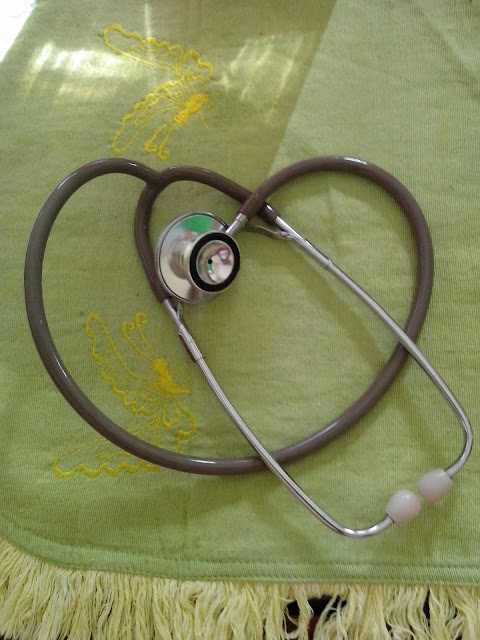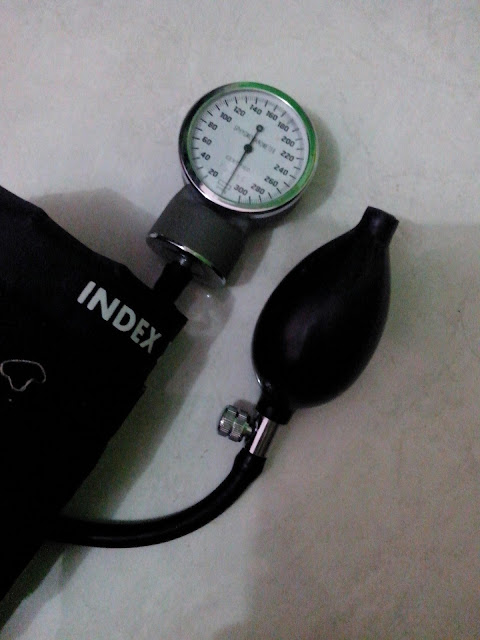A stethoscope is a medical device for listening to sounds inside the body. The initial stethoscope was invented in the early 19th century by French physician Ren� Laennec, but was actually trying to achieve a rather different end: doctor-patient distance....
Monday, April 25, 2016
Preventing Patient Falls
Falls are a major cause of injury and death among elderly people. In fact, the
older the person, the more likely he is to die of a fall or its complications.
Factors that contribute to falls among elderly patients include lengthy
convalescent periods, a greater risk of incomplete recovery, medications,
increasing physical disability, and impaired vision or hearing.
If you're helping a fallen patient, send an assistant to collect
the assessment or resuscitation equipment you need.
Preventing
Assess your patient's risk of falling at least once each shift (or
at least every 3 months if the patient is in a long-term care facility). Your
facility may require more frequent assessments. Note any changes in his
condition -such as decreased mental status- that increase his chances of
falling. If you decide that he's at risk, take steps to reduce the danger.
Correct potential dangers in the patient's room. Position the call
light so that he can reach it. Provide adequate nighttime
lighting.
Place the patient's personal belongings and aids (purse, wallet,
books, tissues, urinal, commode, cane or walker) within easy reach.
Instruct him to rise slowly from a supine position to avoid possible dizziness and loss of balance.
Keep the bed in its lowest position so the
patient can easily reach the floor when he gets out of bed. This also reduces the distance to the floor in case he
falls. Lock the bed's wheels. If side rails are to be raised, observe the
patient frequently.
Advise the patient to wear nonskid footwear.
Respond promptly to the patient's call light to
help limit the number of times he gets out of bed without help.
Check the patient at least every 2 hours. Check a high-risk patient
every 30 minutes.
Alert other caregivers to the patient's risk of falling and to the
interventions you've implemented.
Consider other precautions, such as placing two high-risk patients
in the same room and having someone with them at all times.
Encourage the patient to perform active range-of-motion (ROM)
exercises to improve flexibility and coordination.
Monday, January 18, 2016
Common Signs of a Sleep Disorder
Look over this list of common signs of a sleep disorders, and talk to your doctor if you have any of them:
- It takes you more than 30 minutes to fall asleep at night.
- You awaken frequently in the night and then have trouble falling back to sleep again.
- You awaken too early in the morning.
- You frequently don’t feel well rested despite spending 7–8 hours or more asleep at night.
- You feel sleepy during the day and fall asleep within 5 minutes if you have an opportunity to nap, or you fall asleep at inappropriate times during the day.
- Your bed partner claims you snore loudly, snort, gasp, or make choking sounds while you sleep, or your partner notices your breathing stops for short periods.
- You have creeping, tingling, or crawling feelings in your legs that are relieved by moving or massaging them, especially in the evening and when you try to fall asleep.
- You have vivid, dreamlike experiences while falling asleep or dozing.
- You have episodes of sudden muscle weakness when you are angry, fearful, or when you laugh.
- You feel as though you cannot move when you first wake up.
- Your bed partner notes that your legs or arms jerk often during sleep.
- You regularly need to use stimulants to stay awake during the day.
Also keep in mind that, although children can show some of these same signs of a sleep disorder, they often do not show signs of excessive daytime sleepiness. Instead, they may seem overactive and have difficulty focusing and concentrating. They also may not do their best in school.
Monday, January 4, 2016
Which Pediatrician Should We Choose?
They’re skilled listeners, and can pick up the cues of what’s said between the lines to know what’s really worrying a parent. Children feel at ease around a good pediatrician, so exams are more thorough and enjoyable. If you’ve found your dream pediatrician, your children will look forward to their visits. You’ll be relying on the pediatrician’s office, too: How well is it run? How good is the staff? If their office is poorly run, even great pediatricians won’t be able to keep parents happy.
Pediatricians come in all shapes and personalities. Which one to choose often comes down to personal preference and comfort.
Old versus Young
The stereotype is that older doctors have more years of valuable experience, and younger doctors are more up-to-date on the latest research and techniques. There’s some truth in this. Whether you end up favoring youth versus experience, you’ll want to work with doctors who keep up on their reading and maintain a healthy curiosity about children’s health. Any doctor, young or old, who feels they already know all they need to know is someone you should avoid. If your gut feeling is that you’d prefer a doctor with some grey hairs, go with that; if you think your children would prefer a younger physician, go that route. Either way can be fine, as long as you are confident and comfortable with your pediatrician’s skills and experience.
The stereotype is that older doctors have more years of valuable experience, and younger doctors are more up-to-date on the latest research and techniques. There’s some truth in this. Whether you end up favoring youth versus experience, you’ll want to work with doctors who keep up on their reading and maintain a healthy curiosity about children’s health. Any doctor, young or old, who feels they already know all they need to know is someone you should avoid. If your gut feeling is that you’d prefer a doctor with some grey hairs, go with that; if you think your children would prefer a younger physician, go that route. Either way can be fine, as long as you are confident and comfortable with your pediatrician’s skills and experience.
I’m sometimes asked if I have children, or if a pediatrician needs to have children to be competent. Although I’ve certainly learned a tremendous amount from my own three kids, I think pediatricians who keep their minds open and really watch children will be able to learn what they need to know, even if they don’t have children of their own.
Man versus Woman
Most general pediatricians coming out of training are now women, so it’s going to get more difficult to find a male pediatrician in the future. If you’ve got your own comfort zone about who seems more competent, go with your gut. Most younger children don’t care whether their doctor is a man or woman, but many teenagers do. Though you may have to change doctors in ten years, don’t get too concerned about matching the genders of your baby and your pediatrician.
Most general pediatricians coming out of training are now women, so it’s going to get more difficult to find a male pediatrician in the future. If you’ve got your own comfort zone about who seems more competent, go with your gut. Most younger children don’t care whether their doctor is a man or woman, but many teenagers do. Though you may have to change doctors in ten years, don’t get too concerned about matching the genders of your baby and your pediatrician.
Personality Types
Some doctors are quiet and thoughtful; some are kind of kooky. Some are quite direct, and don’t beat around the bush; some are much more “gentle” in the way they communicate. Some doctors become more emotionally attached to their families and might act more “friendly”; others prefer to maintain a profession detachment. These and many other aspects of a pediatrician’s personality may fit better or worse with what you’re looking for. Meet a variety of doctors until you find one that “clicks” for you.
Some doctors are quiet and thoughtful; some are kind of kooky. Some are quite direct, and don’t beat around the bush; some are much more “gentle” in the way they communicate. Some doctors become more emotionally attached to their families and might act more “friendly”; others prefer to maintain a profession detachment. These and many other aspects of a pediatrician’s personality may fit better or worse with what you’re looking for. Meet a variety of doctors until you find one that “clicks” for you.
Availability
An otherwise excellent pediatrician with commitments to teaching, research, or other matters may not be regularly available. This may matter more to you if your children are younger or have special health needs that require more frequent visits to a doctor who knows them well.
An otherwise excellent pediatrician with commitments to teaching, research, or other matters may not be regularly available. This may matter more to you if your children are younger or have special health needs that require more frequent visits to a doctor who knows them well.
Subscribe to:
Comments (Atom)
Powered by Blogger.




